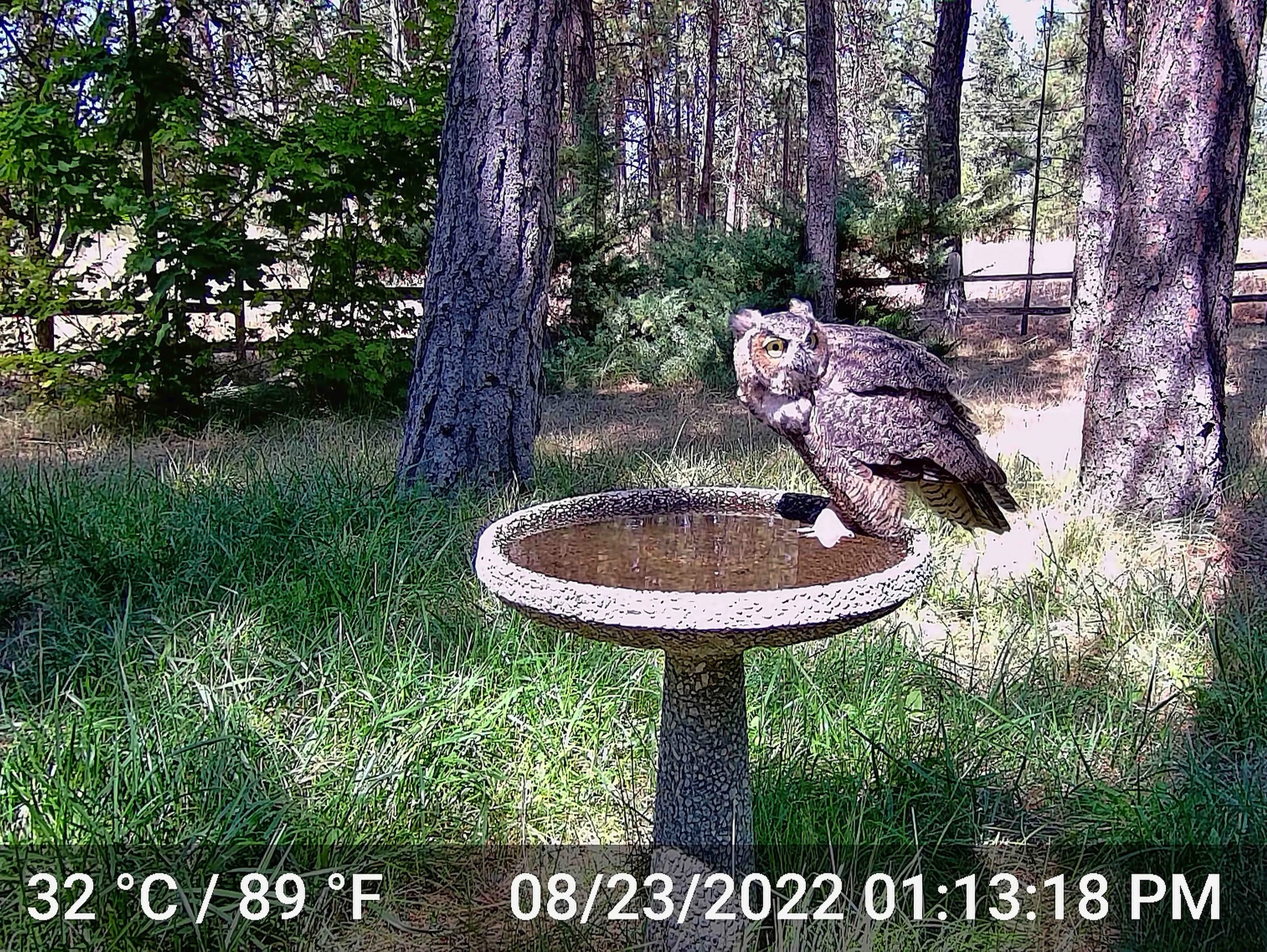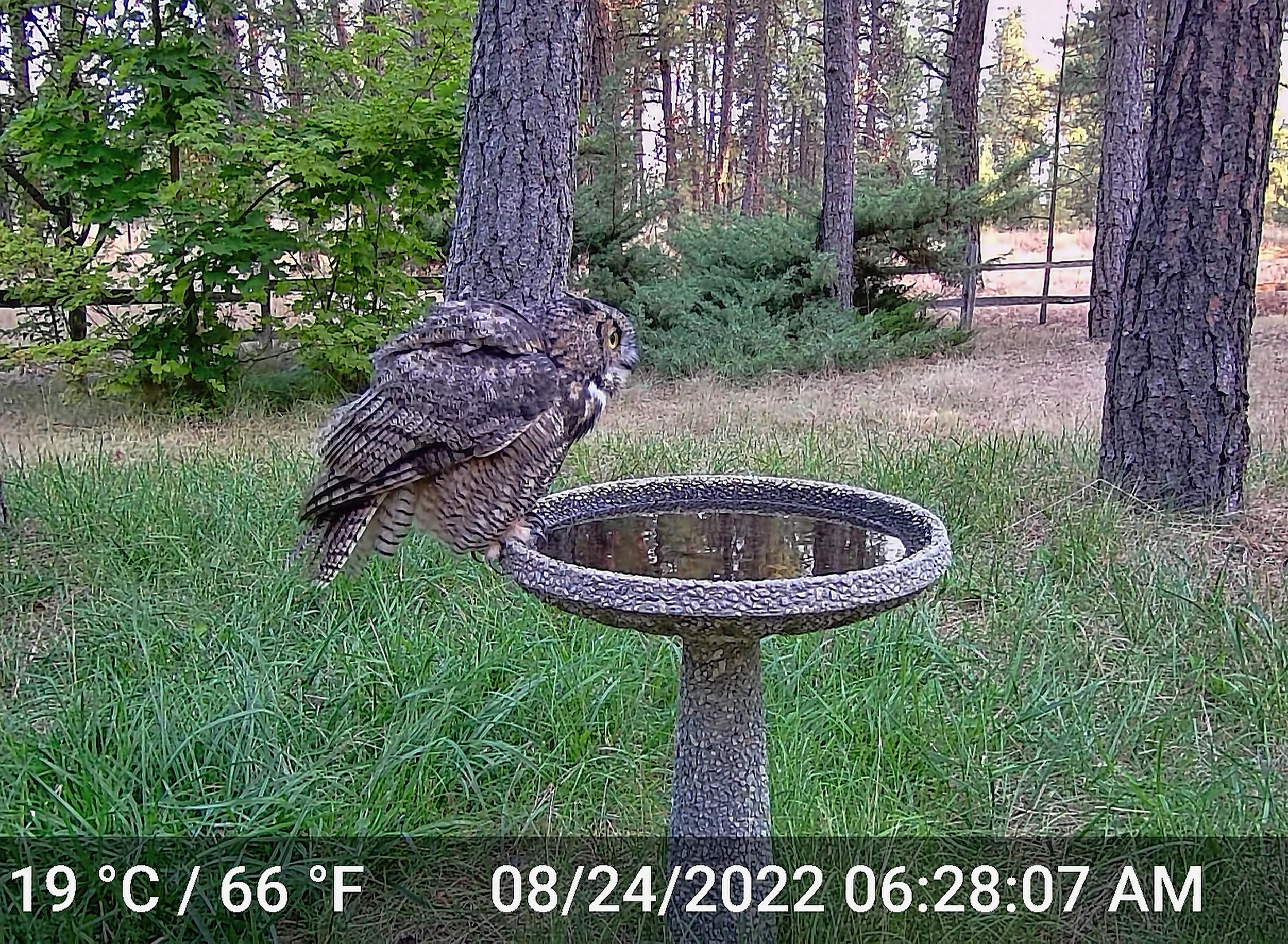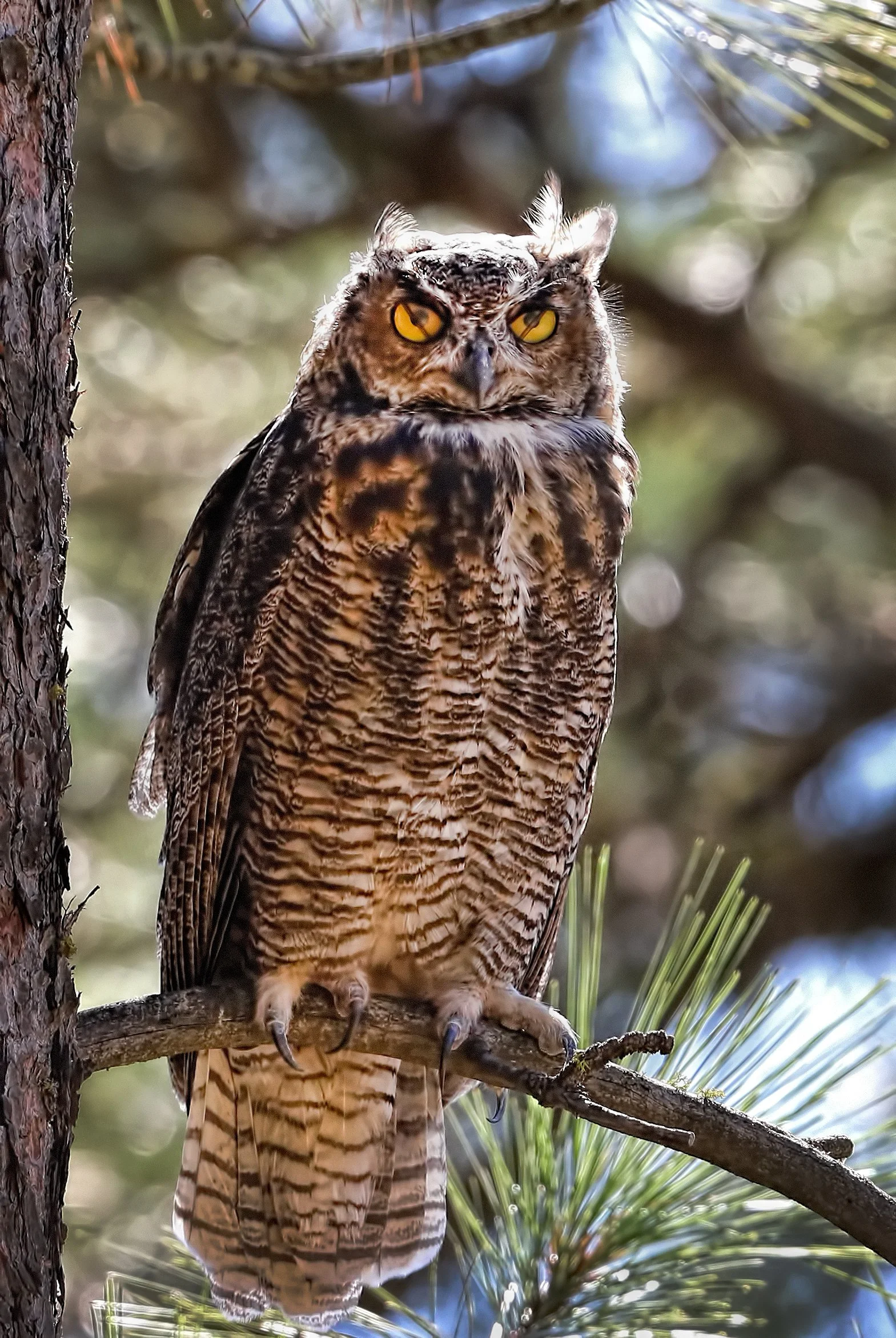to accommodate two Great Horned Owls at once! These two spent about 30 minutes together in the pool before retreating to a nearby perch to preen.
One GHO used the trail camera as a nearby perch before returning to the bath.
Right on time for a visit the following morning.

































